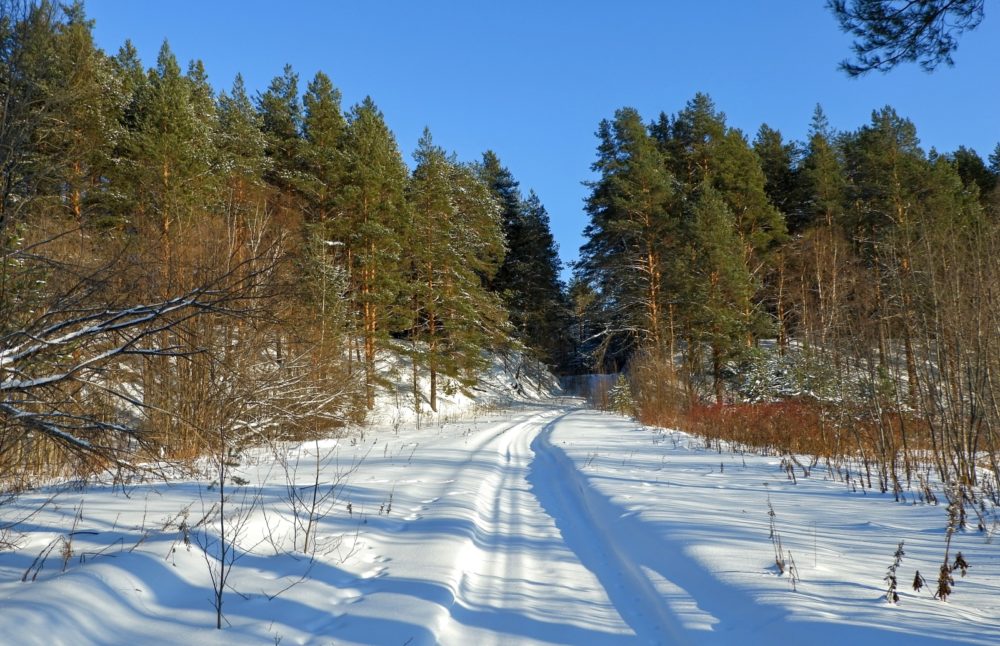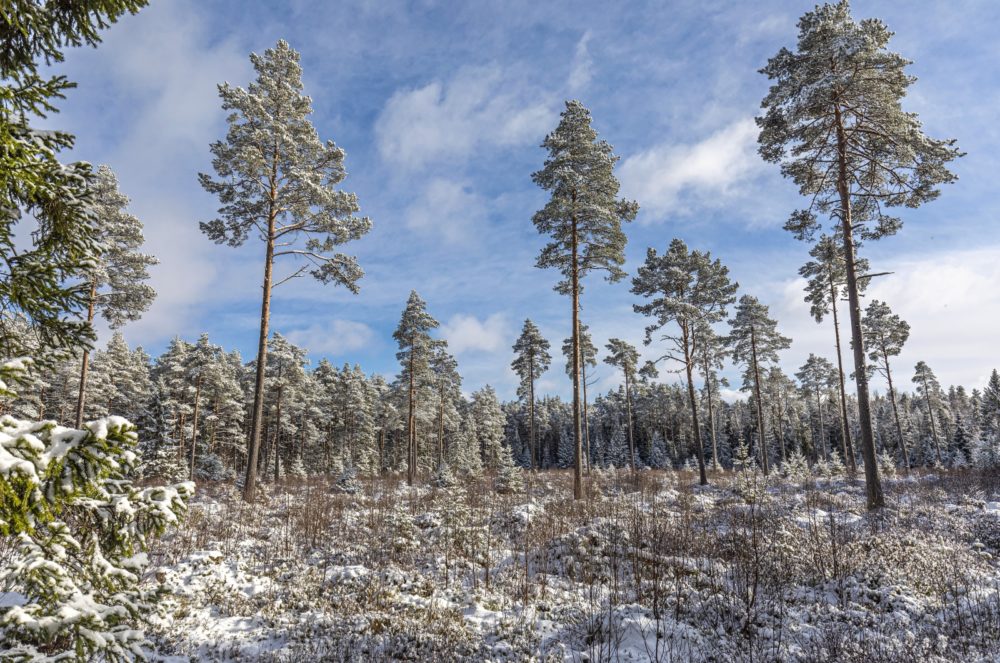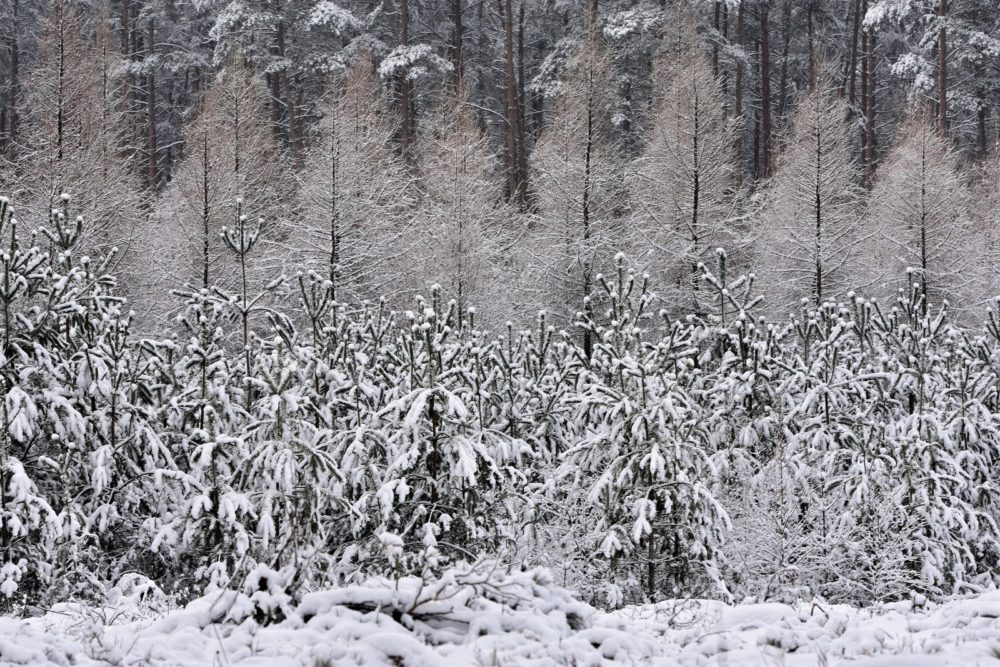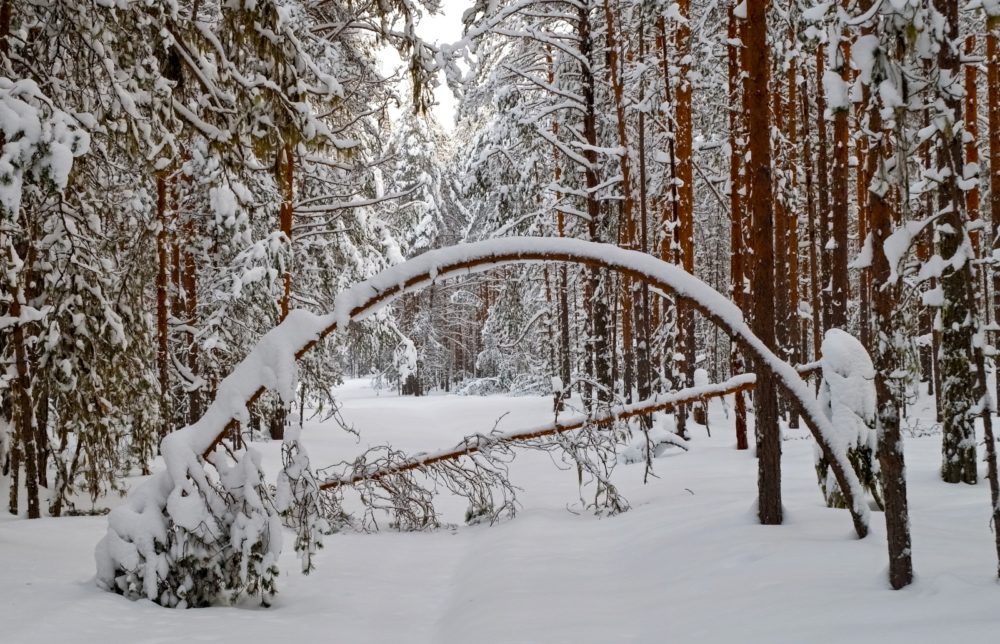Scientists have proposed management practices for pine forests to mitigate negative impacts of climate change.
 In recent years, there have been fluctuations in the weather, including uneven rainfall, especially during the growing season, and rising temperatures. These factors have weakened forest stands and made trees more susceptible to biotic pests. The spruce is particularly affected, but Scots pine is also experiencing withering.
In recent years, there have been fluctuations in the weather, including uneven rainfall, especially during the growing season, and rising temperatures. These factors have weakened forest stands and made trees more susceptible to biotic pests. The spruce is particularly affected, but Scots pine is also experiencing withering.
Scots pine is a type of tree species that has the ability to grow in diverse habitats, ranging from dry to water-affected areas. It is also used for economic purposes, there. However, recent development of the tree stands has revealed that its tolerance to climate changes is limited.
The current economic recommendations for pine stands require revision due to the assumption that the current representation of pines in our forests will be maintained.
Scientists at the Research Station Opočno, VÚLHM, v. v. i., have developed a certified methodology called Management practices in Scots pine stands to mitigate adverse effects of climate change (Postupy hospodaření v porostech borovice lesní pro zmírnění nepříznivých dopadů environmentální změny).
The methodology is designed to offer a set of framework recommendations to efficiently plant Scots pine in the current climate change scenario. As the irregularity in the distribution of precipitation increases and the average air temperatures gradually rise, it is essential to optimize the potential of this tree species.
 The main objective is to improve the chances of successful replanting in appropriate habitats where Scots pine makes up at least 20% of the desired species composition. The recommendations for planting are detailed based on the habitat conditions according to the subsets of the target management groups.
The main objective is to improve the chances of successful replanting in appropriate habitats where Scots pine makes up at least 20% of the desired species composition. The recommendations for planting are detailed based on the habitat conditions according to the subsets of the target management groups.
In some areas, the infestation of pine trees by mistletoe tends to increase until the trees reach around 90 years of age. After that, the proportion of trees attacked by mistletoe remains relatively stable. Pine mistletoe parasitizes water and exacerbates drought stress during dry periods. As mistletoe grows in the crown, defoliation increases and fertility decreases. This has been proven in young stands up to 60 years of age. However, in older stands, the impact of mistletoe on defoliation and fertility is not yet conclusive.
Silvicultural interventions that reduce the rooting of mature pine stands lead to an improvement in the state of health and a gradual increase in average fertility.
The scientists made another significant discovery that a minor disruption of the soil surface, either by using a tiller or compacting the brush into mounds to prepare the stand for regeneration under the canopy, resulted in better health of the pine trees in the subsequent years.
Scots pine is a versatile tree species that possesses several unique qualities, such as its love for light, relative tolerance to temperature fluctuations, and ability to grow quickly when young. Due to these characteristics, it can be used not only as a target tree, but also as a preparatory tree. This is in addition to the more commonly used pioneer woods, such as birch and alder. Scots pine also has a high penetration of radiation under the undergrowth, making it a valuable tree for various purposes.
 The properties of Scots pine can be used in the restoration of large-scale clearings, especially in central locations, to create a suitable environment for the introduction of target tree species that are more sensitive to the microclimate.
The properties of Scots pine can be used in the restoration of large-scale clearings, especially in central locations, to create a suitable environment for the introduction of target tree species that are more sensitive to the microclimate.
The methodology provides the best recommendations for planting Scots pine trees in the current time of climate change, where there is an irregular distribution of rainfall and an increase in average air temperatures. The recommendations are defined to suit the habitat conditions and are designed to ensure that the target species composition has at least a 20% representation in the species mixture.
The methodology includes the latest findings on the resistance and resilience of pine stands with regard to habitat, age and silviculture care, and it is in accordance with current legislation.
The uniqueness of this methodology is in its complexity, which encompasses both the habitat and the development of stands. The methodology incorporates the findings of recent research investigations, and the processing is presented in a format that is similar to the management guidelines prescribed in Regional Forest Development Plans or in general forest renewal. This makes the methodology easily accessible to users who are part of the professional community.
The methodology used for forest management aims to optimize the use and cultivation care of forest stands that have a higher representation of Scots pine. In the Czech Republic, Scots pine is the second most widespread tree species, with a reduced area of approximately 406,000 hectares in 2021. It accounts for 13.3% of the total wood stocks. Scots pine is the primary tree species responsible for wood production functions in habitats of natural pines and in poor habitats at lower elevations. The economic benefit of utilizing this methodology is mainly seen in the efficient use of forest resources and the cultivation of Scots pine.
 Adherence to the procedures recommended in this methodology should contribute to the optimization of the restoration and planting of pine stands, thereby increasing the safety and quality of production while fulfilling other functions of the forest.
Adherence to the procedures recommended in this methodology should contribute to the optimization of the restoration and planting of pine stands, thereby increasing the safety and quality of production while fulfilling other functions of the forest.
One of the expected advantages of the new procedures is reducing the risk of pine stands decay, which could limit the fulfilment of other forest functions. This risk is significantly decreased, especially due to the reduction of large-scale pine monocultures, even in natural pine habitats. It is assumed that the main species of pine will be grown in mixed stands.
Silviculture practices need to change to suit the current species composition of stands, resulting in greater differentiation in washing length and extension of rotation periods.
The methodology was created as part of the project Grant Service of Czech Republic forests, state company, entitled “Differentiation of habitats and management in pine, oak and beech stands to mitigate the adverse effects of environmental change”, which was carried out between 2019 and 2021.
Methodology Management practices in Scots pine stands to mitigate adverse effects of climate change (Postupy hospodaření v porostech borovice lesní pro zmírnění nepříznivých dopadů environmentální změny) can be downloaded here.
Authors: Ing. Ondřej Špulák, Ph.D., doc. RNDR. Marian Slodičák, CSc., Ing. Jiří Novák, Ph.D., Ing. Jan Leugner, Ph.D., VÚLHM, v. v. i., VS Opočno, e-mail: spulak@vulhmop.cz
Prepared by: Ing. Jan Řezáč, VÚLHM, v. v. i., e-mail: rezac@vulhm.cz
Illustrative photos: Examples of pine stands
